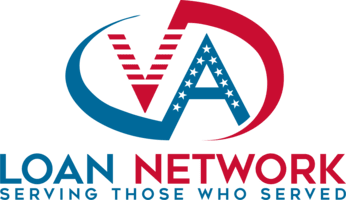Current VA Loan Rates for
VA loan rates remain competitive despite slight fluctuations in the market. These loans continue to provide eligible veterans with an affordable path to homeownership, offering lower rates and more favorable terms compared to conventional loan options. Below are the latest rates for various VA loan types:
VA Mortgage Rates Overview
VA loan rates are subject to daily adjustments based on market conditions. Here’s an updated snapshot of today’s rates for popular VA loan options:
| VA Loan Type | Interest Rate | APR | Points |
|---|---|---|---|
| 30-Year Fixed VA Purchase | 6.010% | 6.440% | 1.8200 |
| 15-Year Fixed VA Purchase | 5.510% | 6.270% | 1.9400 |
| 20-Year Fixed VA Purchase | 5.990% | 6.590% | 1.8200 |
| 30-Year Fixed VA Jumbo Purchase | 6.500% | 6.880% | 0.7500 |
| 30-Year VA Cash-Out Refinance | 6.760% | 7.090% | 0.2600 |
| 30-Year VA Cash-Out Jumbo Refinance | 6.750% | 7.080% | 0.2500 |
| 30-Year Streamline (IRRRL) Refinance | 6.140% | 6.450% | 1.8700 |
| 30-Year Streamline (IRRRL) Jumbo Refinance | 6.520% | 6.780% | 1.3900 |
Key Takeaways:
- 30-Year Fixed VA Purchase Loans remain below 6%, making them a cost-effective option for veterans purchasing a home.
- 15-Year Fixed VA Loans offer a slightly lower interest rate for borrowers looking to pay off their mortgage faster.
- VA Cash-Out Refinances are trending around 6.7%, allowing borrowers to tap into their home equity at competitive rates.
- Streamline Refinances (IRRRLs) continue to provide an easy path to lower rates, especially for those with existing VA loans.
Tips for Locking in Rates:
- Monitor Daily Changes: VA loan rates can vary based on the broader market and individual lender offerings.
- Compare Lenders: Different lenders may offer varying rates and APRs, so shop around for the best deal.
- Consider Timing: Lock in a rate when the market is favorable to avoid potential increases.
For veterans and service members considering purchasing a home or refinancing their current VA loan, these rates demonstrate the continued affordability of VA-backed mortgages.
Check Rates with Multiple VA Lenders in Our Network
Factors Influencing VA Loan Rates
Several factors contribute to the rates offered to each VA loan borrower:
- Credit Score: Generally, a higher score results in a lower interest rate.
- Loan Type: Rates can vary depending on whether the loan is for a new purchase, cash-out refinance, or an Interest Rate Reduction Refinance Loan (IRRRL).
- Loan Term: 15-year loans typically have lower rates than 30-year loans.
- Market Conditions: Economic trends, Federal Reserve decisions, and inflation rates impact daily rate adjustments.
“With a stable credit score and a clear understanding of VA loan options, veterans can secure a rate that supports their financial goals,” advises Michael Burns, Mortgage Advisor at Patriot Home Lending.
Getting Your Customized VA Loan Rate
A good credit score and stable income are beneficial when securing a VA loan. Veterans who need to improve their credit before applying can take advantage of free credit counseling services offered by many VA lenders.
Today’s VA Refinance Rates
Refinance rates are also higher than previous weeks but offer veterans the chance to tap into their home equity or lower their monthly payments. The table below highlights current refinance options:
| VA Refinance Type | Interest Rate | APR | Points |
|---|---|---|---|
| 30-Year VA Cash-Out Refinance | 6.750% | 7.080% | 0.2500 |
| 30-Year Streamline (IRRRL) Refinance | 6.125% | 6.440% | 1.8750 |
To view detailed assumptions for today’s VA refinance rates, visit the Veterans Benefits Administration site or the VA’s loan rates resource.
Common Questions About VA Loan Rates
Who sets VA loan rates?
Rates for VA loans are set by private lenders, not the Department of Veterans Affairs. Although the VA guarantees part of each loan, it doesn’t control the rates.
How do VA loan rates compare with other loan types?
VA loan rates are generally lower than both FHA and conventional loans due to the VA’s backing, which reduces risk for lenders.
How are VA loan rates calculated?
Rates are determined by market factors, borrower credit history, loan type, and term length. Additional influences include inflation, Federal Reserve policies, and secondary mortgage markets.
Are VA refinance rates different from purchase rates?
Yes, refinance rates can differ from purchase rates and vary based on the type of refinance loan (IRRRL or cash-out).
Understanding APR on VA Loans
The APR (Annual Percentage Rate) on a VA loan gives a fuller picture of loan costs, including the interest rate plus additional fees, such as:
- Loan origination fees
- Closing costs
- Discount points
APR can help you compare loans across lenders, though keep in mind that some lenders calculate APR differently.
Locking in Your Rate with a Rate Lock
A rate lock ensures your rate won’t change for a specified period, typically 30 to 60 days, allowing you to finalize your loan at a stable rate. This is crucial in a fluctuating market and can protect you from sudden rate increases. To lock in a VA loan rate, you need to be under contract on a property.
“Securing a rate lock when rates are stable can save veterans thousands over the life of the loan,” notes Sarah Thompson, Senior Loan Specialist at Veteran Lending Solutions.
VA Loan Discount Points
Veterans have the option to purchase discount points, allowing them to pay more upfront to lower the interest rate over the life of the loan. This is beneficial for veterans planning to stay in their home long-term.
Conclusion
VA loan rates remain a competitive and accessible option for eligible veterans, providing unique financial benefits. Locking in a favorable rate at the right time is essential, especially in today’s variable market. For personalized guidance and current rates, reach out to a VA-approved lender.
This comprehensive guide helps you stay informed about VA loan rates so you can make the best financial decision for your homeownership journey. For more information on rate assumptions or the application process, explore the VA’s official site or contact a trusted VA lender.
VA Loan Eligibility Criteria
To be eligible for a VA loan, applicants must satisfy the Department of Veterans Affairs’ service and eligibility requirements.
- Veterans: Veterans who have completed the required active-duty service and were discharged honorably or under conditions other than dishonorable may qualify.
- Active-duty service members: Those currently serving on active duty can apply.
- National Guard and Reserve members: Eligible if they have completed six years of service or at least 90 days of active-duty service during wartime.
- Surviving spouses: Spouses of service members who died in the line of duty or due to a service-related injury may also be eligible for VA loan benefits.
Service Time Requirements Include:
- 90 consecutive days of active duty during wartime
- 181 consecutive days of active duty during peacetime
- Six years of service in the National Guard or Reserves, or at least 90 days of active-duty service under Title 32 orders (with at least 30 consecutive days served)
VA Loan Eligibility Calculator

Who are VA Loans For?

How VA Loans Work?

How to Qualify?
- Served at least 90 consecutive days during wartime or 181 days during peacetime.
- VA Certificate of Eligibility
- No down payment required.
- Minimum 620 credit score
- Debt-to-income of 45% or lower
